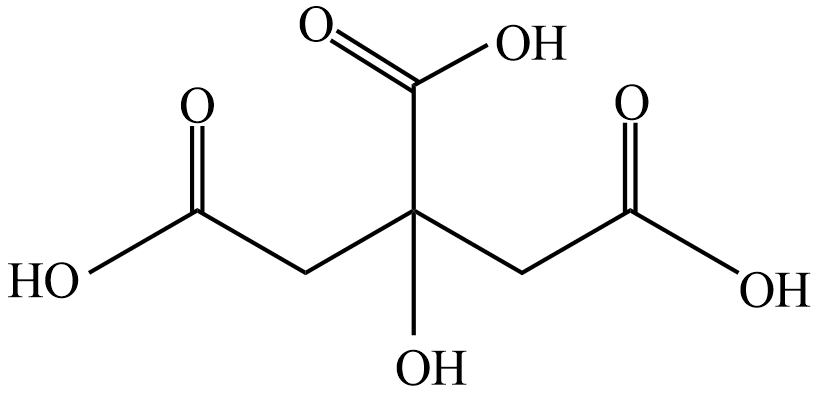
Is Citric acid Optically active?
Answer
391.5k+ views
Hint: For answering this question we should learn about Optical activity and Chirality of organic compounds. We will discuss both processes and structure of Citric acid in detail to decide whether it is optically active or not.
Complete answer:
Optical activity of an organic compound tells us about the property of organic compounds by which the organic compound rotates the plane-polarized light when it is passed through the solution of the organic compound. These compounds are called Optically active compounds.
Optical activity has two types
Dextrorotatory: It means rotation to the right. If the organic compound rotates the light to the right side or in clockwise direction it is known as dextrorotatory. It is represented by adding a $ ( + ) $ sign before the degree of rotation.
Laevorotatory: It means rotation to the left. If the organic compound rotates the plane polarised light to the left side or in anticlockwise direction it is known as laevorotatory. It is represented by adding a $ ( - ) $ sign before degree of rotation
Chirality
A structure which is asymmetric and non-superimposable over its mirror image is known as chiral or stereocenter. This property of compound is known as chirality.
Both above mentioned properties are required for a compound to be optically active.
Let' see the structure of Citric acid

From above structure we can see the Citric acid does not contain a chiral carbon and does not show any stereoisomerism so it is optically inactive.
Note:
Citric acid appears to be a colourless and odourless crystals with taste like an acid. It is denser than water. It is generally present in citrus fruits Oranges and lemons. Citrus acid is used as a food acidity regulator.
Complete answer:
Optical activity of an organic compound tells us about the property of organic compounds by which the organic compound rotates the plane-polarized light when it is passed through the solution of the organic compound. These compounds are called Optically active compounds.
Optical activity has two types
Dextrorotatory: It means rotation to the right. If the organic compound rotates the light to the right side or in clockwise direction it is known as dextrorotatory. It is represented by adding a $ ( + ) $ sign before the degree of rotation.
Laevorotatory: It means rotation to the left. If the organic compound rotates the plane polarised light to the left side or in anticlockwise direction it is known as laevorotatory. It is represented by adding a $ ( - ) $ sign before degree of rotation
Chirality
A structure which is asymmetric and non-superimposable over its mirror image is known as chiral or stereocenter. This property of compound is known as chirality.
Both above mentioned properties are required for a compound to be optically active.
Let' see the structure of Citric acid

From above structure we can see the Citric acid does not contain a chiral carbon and does not show any stereoisomerism so it is optically inactive.
Note:
Citric acid appears to be a colourless and odourless crystals with taste like an acid. It is denser than water. It is generally present in citrus fruits Oranges and lemons. Citrus acid is used as a food acidity regulator.
Recently Updated Pages
One difference between a Formal Letter and an informal class null english null

Can anyone list 10 advantages and disadvantages of friction

What are the Components of Financial System?

How do you arrange NH4 + BF3 H2O C2H2 in increasing class 11 chemistry CBSE

Is H mCT and q mCT the same thing If so which is more class 11 chemistry CBSE

What are the possible quantum number for the last outermost class 11 chemistry CBSE

Trending doubts
10 examples of friction in our daily life

Difference Between Prokaryotic Cells and Eukaryotic Cells

What is the specific heat capacity of ice water and class 11 physics CBSE

One Metric ton is equal to kg A 10000 B 1000 C 100 class 11 physics CBSE

State and prove Bernoullis theorem class 11 physics CBSE

State the laws of reflection of light




